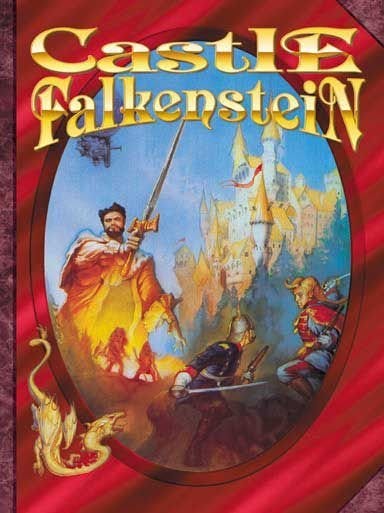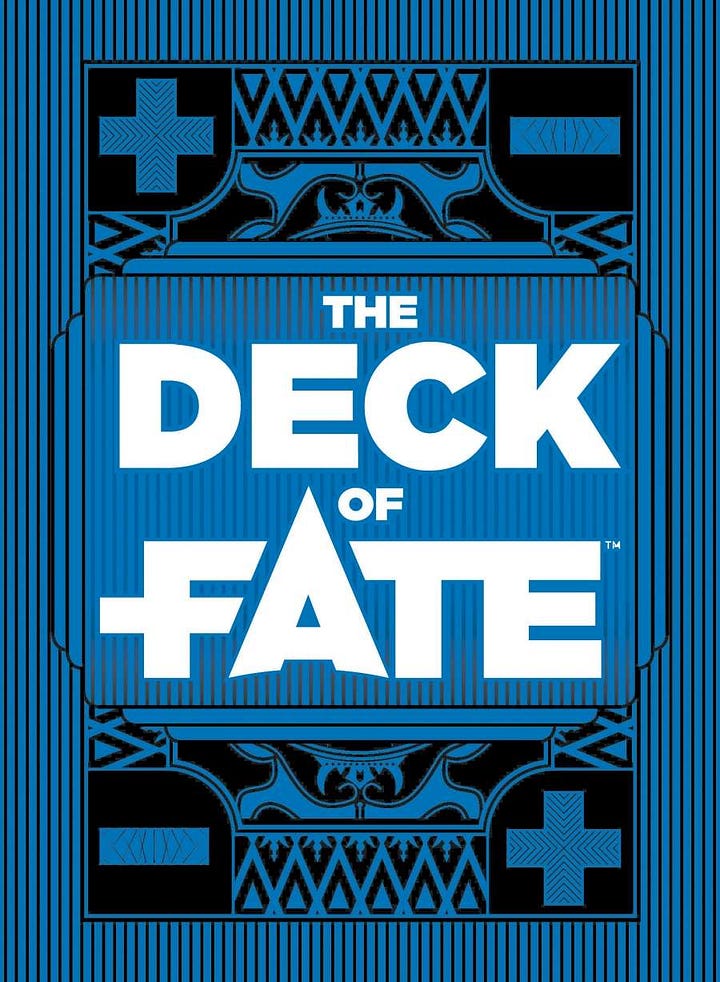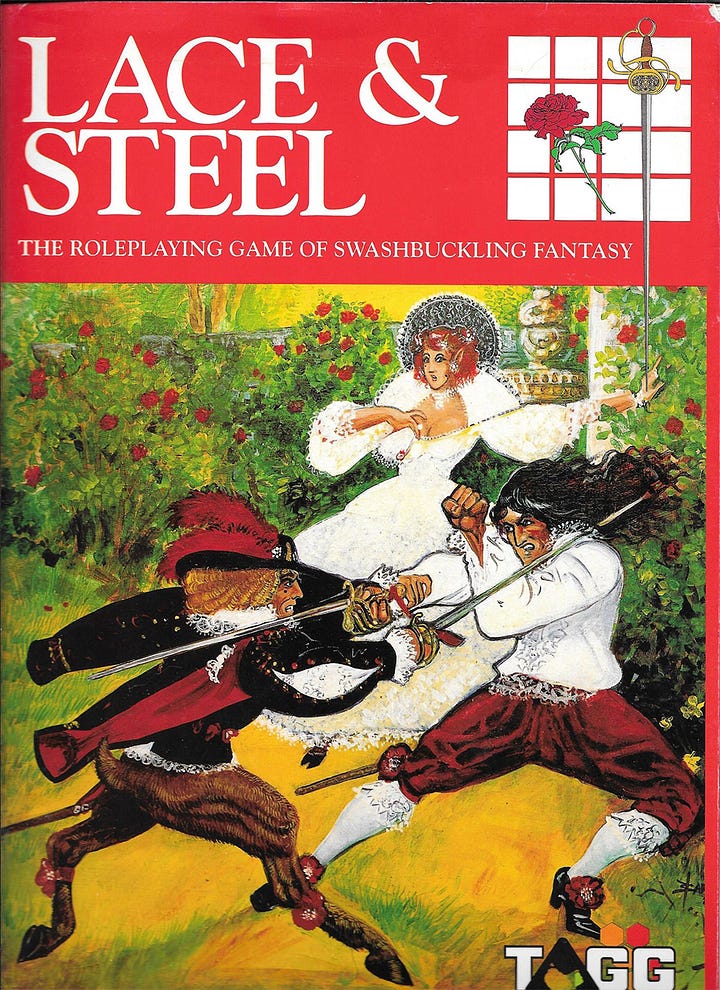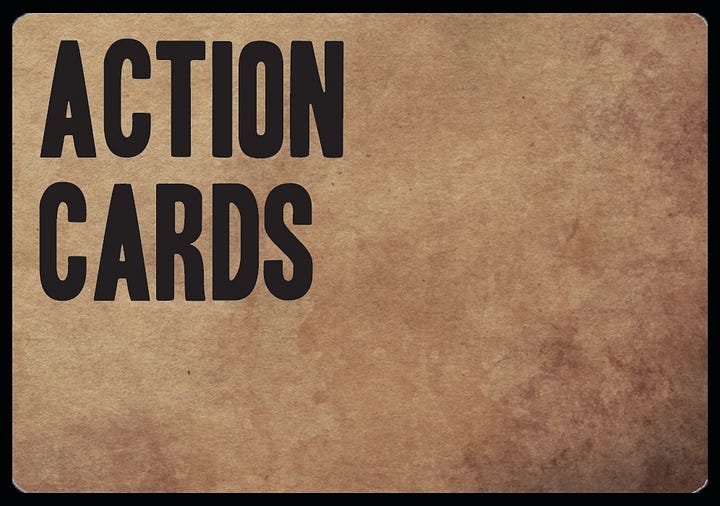



As I mentioned yesterday, I love cards. I love them in all the ways they’re used: tracking items in Forbidden Lands, generating plots in Mutant Year Zero, offering up picks and prompts for NPCs in Pasión de las Pasiones, presenting heartbreaking character images in Night Witches. I love the new strain of game which is entirely or mostly built on the cards themselves: For the Queen, Companion’s Tale, Desperation, and others.
But I really love the idea of cards as our randomizer. It can become an engine that takes the place of dice and does more with it. I mentioned Zombie World yesterday. It substitutes a Survivor Deck for the standard PbtA 2d6. Players draw a variable number of cards from this and take the best result. That’s complicated by the Bite Deck. When zombies get a hand on a character, they draw from this to see if they’re bitten. The card approach means they can draw secretly and choose to keep the result to themselves.
The earliest ttrpg I recall using playing cards in a major way was Castle Falkenstein. It included a diegetic reason for doing so: in the alternate 19th century setting, using dice is seen as gauche, lower class, and scandalous. It’s one of a handful of rpgs presented as a game within the setting itself. (The only other one I can think of is Kevin Crawford’s Wolves of God, written as a game from the 8th Century).
Falkenstein demonstrated how a simple set of playing cards could be used in different ways– with the suits being associated strongly with different actions. For magic in particular, the deck adds an interesting element. Each suit is associated with a distinct magical energy. Casting a spell requires a specific combination of that energy. Players draw from the deck to generate the necessary mana, with additional complications for trying to use the wrong energy or gathering too much.
More recently Evil Hat created an optional card-resolution approach with The Deck of Fate. This takes all the possible rolls for the standard Fate Dice (4dF) and distributes them on cards. This offers a great option when dice aren’t available. But the Deck expands this: each card also has a set of symbols on them: a mix of one to three Suns and/or Moons, or an Eclipse.
While there aren’t set rules for these within Fate, GMs can play with them for tweaks on results. Wrath of Autarch exclusively uses the Deck of Fate for resolution. The additional symbols are used for task generation for the PCs missions. It shows how cards can layer information.
Lace and Steel is the earliest full-rpg I remember using non-standard cards. The boxed set for it included unique decks to resolve physical and social duels. This included hand management and careful choice of play of cards. Higher skilled characters had more access to choices, but the game had a bluffing component to it. There had been some earlier pseudo-rpgs which used this approach for duels, but Lace and Steel developed it fully.
The Gloomhaven board game, which I wouldn’t call a full rpg, uses cards and hand management. Characters have individual decks based on their archetype. Actions require expending those cards. Damage impacts your hand size iirc. The Pathfinder Card Game also used a similar thing, with your health explicitly measured in your remaining deck. The actual Gloomhaven rpg, crowdfunded in April 2023 will also be using the originals approach to cards. I wouldn’t be surprised if that has the same plethora of decks that the FFG Star Wars series has generated.
But the card-based approach I’m most fond of is the homebrew system we played from about 2000 to 2019. It was a victim of the pandemic– the inability to play face to face making it almost impossible to use. This was Action Cards.
In this game, each player has a deck of twenty four cards. Six of the cards offer special effects (critical success, big failure, etc). The rest of the cards have four categories Social, Mental, Physical, and Combat, as well as a success level: Win Big, Great, OK, Just Missed, Bad, and Lose Big. The particular terminology for these varied from game to game and players chose their own ‘Win Big’ phrase. When players took an action, they drew from their deck to resolve it. If they had a skill they could draw a second time and take that result instead. Some effects could allow them to draw a third time.
Part of the trick here is that each person’s deck is unique. There are a few set cards, but for the most part they get to distribute those results across them during character creation. These can be increased over time and cards can have edges written in which give them a bump for related actions. The other part of the trick is that players don’t reshuffle their decks until they get to the last six cards or they spend a game token. So there’s a push-your-luck factor here– and an element of knowing your deck and which cards you’ve already drawn.
Action Cards remains one of my favorite systems and I know that someday I have to go back to it for face-to-face play. I’ve tried a couple of online versions, using Roll20 in particular, but struggling with the interface meant it was more work than fun.



